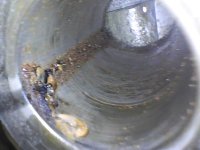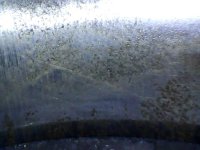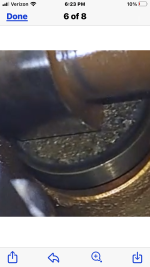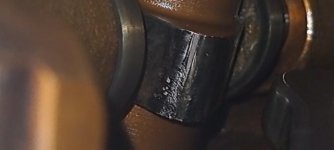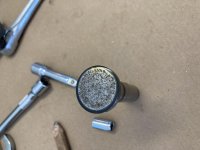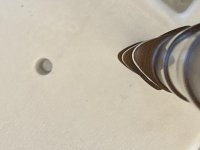Another thing to avoid if you want to minimize the risks of corrosion, is leaded fuel. Here is an excerpt from the CAA Pilot's Power Plant Manual. It is amazing the depth of knowledge that was present in 1940 on this topic.
Tom.
RV-7, that doesn't drink leaded fuel.
https://books.googleusercontent.com...ErpIiOtrmly3jxicZRZQdli7NMF_m6Qg4CrjwpYCMH0Vg
PAGE 194
TETRAETHYL LEAD
A convenient means of improving the antiknock characteristics of a fuel is to add a knock inhibitor. Such a fluid must have a minimum of corrosive or other undesirable qualities and probably the best available inhibitor in general use at present is known as tetraethyl lead . The few difficulties encountered due to corrosion tendencies of ethylized gasoline are insignificant compared with the results obtained from the high antiknock value of the fuel.
....
Ethyl fluid, in addition to tetraethyl lead and a trace of dye, contains sufficient ethylene dibromide to convert the lead to lead bromide, which is volatile at exhaust temperatures and so passes out of the engine with the exhaust gases. Without the use of ethylene dibromide, the lead would be deposited in the engine as lead oxide, which, in addition to building up a deposit, would cause considerable corrosion. Lead bromide at high temperature is also an extraordinarily highly corrosive
compound.
...
The addition of more lead than is required to eliminate detonation has the effect of decreasing the power slightly and increasing the temperature of the exhaust gases.
Corrosion due to ethyl gasoline.-There are two distinct types of corrosion due to ethyl gasoline. The first is caused by the reaction of the lead bromide with hot metallic surfaces, and occurs only when the engine is in operation. The second is caused by the condensed aqueous products of combustion ,
chiefly hydrobromic acid, when the engine is shut-down. The various parts of an engine most affected by corrosion and preventative measures are discussed in the following:
Steel cylinder barrels in composite steel-aluminum cylinders corrode
rapidly due to galvanic action with aluminum bromide. Corrosion due to condensed aqueous products of combustion can be eliminated by injecting oil or more effective rust-preventive compounds into the intake ports as near the valve as possible on stopping the engine.
Valves and valve-seat inserts do not present corrosion difficulties to any great extent when the valve gear is lubricated properly. The cooling of the exhaust valves by means of sodium reduces high temperature corrosion. Austenitic nickel-chromium valve steel nearly eliminates valve corrosion. Stellited valve faces and valve-seat inserts show practically no attack from use of ethyl gasoline.
Exhaust disposal systems have been the cause of airplanes burning up while the engines were idling or had just been shut-off, due to hot iron oxide flaking off the exhausts. The oxide deposit probably is caused by the action of hot lead bromide on the exhaust steel. This problem has been solved by the use of stainless steel for exhausts. Camshafts, rocker arms, valve springs , etc., are subject to a certain amount of corrosion. This may be eliminated by providing more lubrication , since
corrosion of metal does not occur when the metal is covered with a film of oil .
Other means of reducing it are by avoiding overcooling, and the presence of
pockets in the valve gear and means of removing the fumes, thereby reducing
the amount of aqueous condensation.



